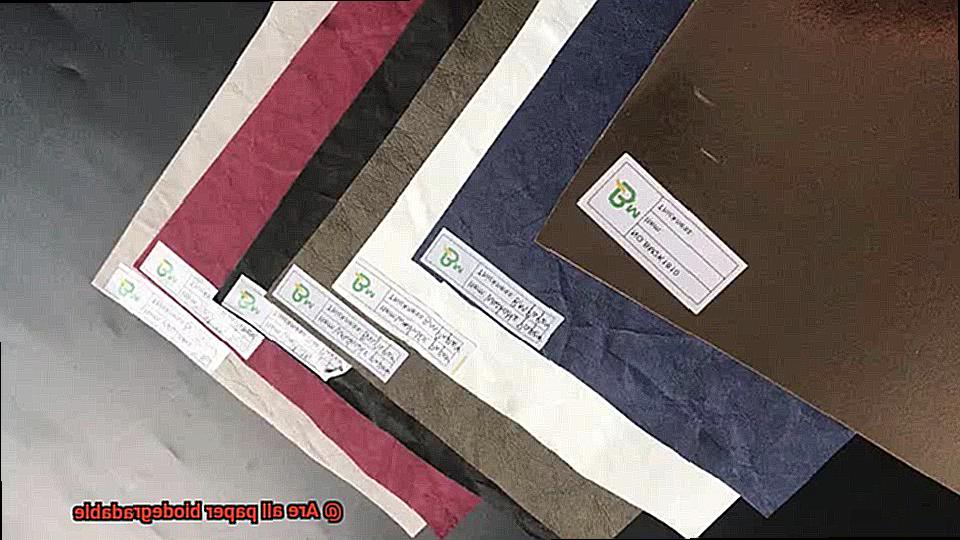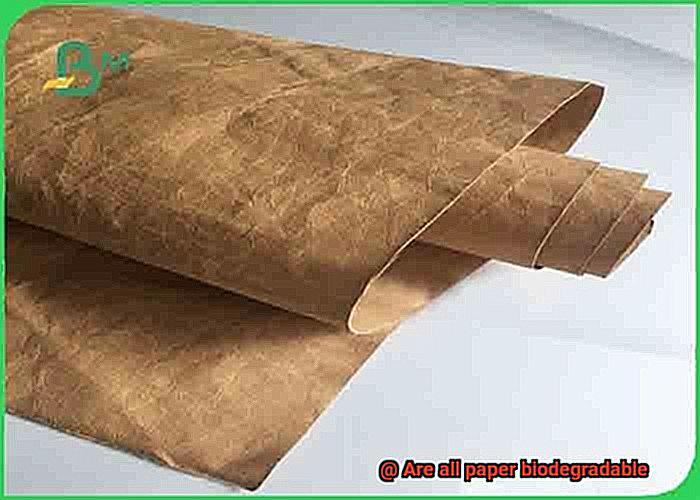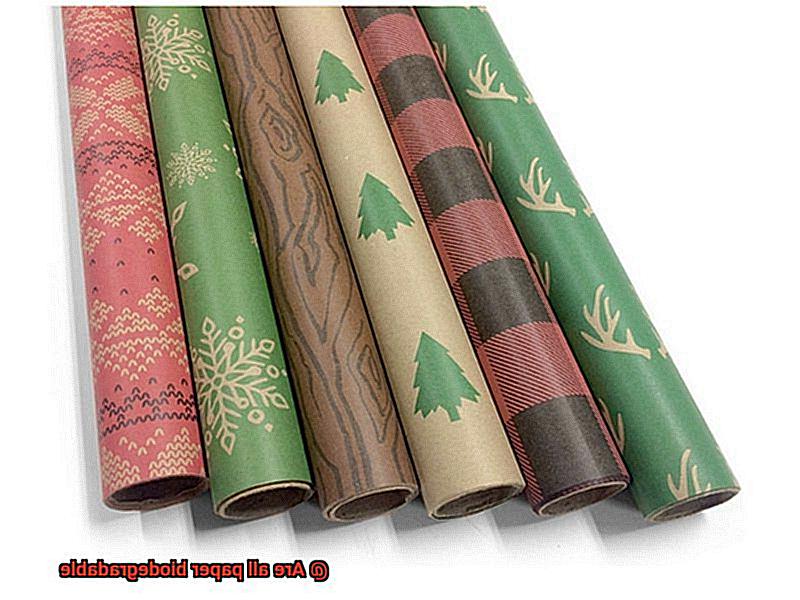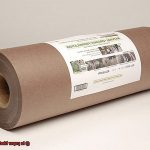Have you ever wondered what happens to the papers you toss in the trash? Do they break down quickly, or do they linger in landfills for years? While many assume that all paper is biodegradable, it’s a bit more complicated than that. The environmental impact of paper is a critical issue that affects us all, from individuals to massive corporations. But are all papers created equal when it comes to biodegradability?
Believe it or not, some paper products can take years to decompose, while others break down in mere weeks. The type of paper and how it’s disposed of play significant roles in determining its fate. In this blog post, we’ll dive deep into the topic of paper biodegradability and help you understand what to look for when shopping for eco-friendly paper products.
We’ll explore different types of paper and their biodegradability, including recycled, virgin, and coated papers. We’ll also examine how improper disposal of paper can harm the environment and provide strategies for responsible disposal. Armed with this knowledge, you can make informed decisions about which paper products you use and contribute to a sustainable future.
So if you’re curious about the biodegradability of paper and want to learn more about how your choices impact the planet, keep reading.
Is All Paper Biodegradable?
Contents
It’s a question I get asked often, and the answer isn’t as straightforward as you might think. The fact is, not all types of paper are biodegradable. The biodegradability of paper depends on the materials used to make it.
If you’re using paper made from natural materials like wood pulp or cotton, then you’re in luck – it’s biodegradable. The biodegradation process occurs through microbial action, where microbes break down the organic materials in the paper and turn them into water, carbon dioxide, and other organic compounds. However, some types of natural paper may take longer to biodegrade than others. For instance, glossy or coated paper may take longer to break down because the coating prevents microbes from accessing the organic materials inside.
On the flip side, synthetic paper made from plastics or other non-biodegradable materials will not biodegrade at all. These types of paper will remain in the environment for hundreds of years, releasing harmful chemicals and pollutants as they slowly break down into smaller and smaller pieces.
This is why it’s crucial to choose natural paper made from sustainable sources to reduce your environmental impact and support a healthier planet.
Factors Affecting the Biodegradability of Paper
When it comes to the biodegradability of paper, not all paper products are created equal. There are various factors that can influence how quickly and effectively paper breaks down, including the type of paper, the presence of coatings or additives, and the conditions in which it is disposed of.
The type of paper itself is a significant factor that impacts biodegradability. While most papers are made from natural plant fibers that can break down through microbial action over time, some papers may contain synthetic materials or chemicals that can slow down or prevent biodegradation altogether. Coated or glossy papers, for example, often contain plastics or other non-biodegradable materials that can take much longer to break down.
Aside from coatings and additives, the way in which paper is disposed of can also have an effect on its biodegradability. Paper that is buried in a landfill may take significantly longer to break down than paper that is composted or recycled. This is because landfills are designed to minimize the amount of oxygen and moisture that reaches buried waste, which in turn slows down the natural decomposition process. It is essential for consumers and businesses alike to dispose of their paper products responsibly.
The size and shape of paper products can also impact their biodegradability. Larger pieces of paper may take longer to break down than smaller pieces due to less surface area exposure to microbes.
On the other hand, shredded or torn paper may decompose more quickly due to increased surface area. Additionally, folded or layered papers may retain moisture and prevent oxygen from reaching the inner layers, which can also slow down biodegradation.
Types of Paper That Are Not Biodegradable
While paper has long been considered an eco-friendly material, there are certain kinds that can harm the environment due to their inability to break down naturally. Let’s take a closer look.
Coated Paper
First, it is glossy or coated paper. You’ve probably seen this type of paper in magazines, flyers, or brochures. The coating on this paper is typically made of materials like clay or plastic which make it resistant to decomposition. This means that it could take significantly longer for this kind of paper to break down in the environment.

Thermal Paper
Next up is thermal paper. It’s often used for receipts and tickets and contains a chemical called bisphenol A (BPA). Unfortunately, BPA can take hundreds of years to decompose, which means it can be harmful to animals and plants if it’s released into the environment.
Laminated Paper
Another type of paper that is not biodegradable is laminated paper. This type of paper is created by layering plastic film onto paper to make it durable and water-resistant. While this type of paper is beneficial for many purposes, the plastic layer prevents it from breaking down naturally.
Neon-colored or metallic papers
Lastly, some paper products contain synthetic fibers or dyes that can impede biodegradation. Neon-colored or metallic papers are prime examples because they often contain heavy metals and other chemicals that can be harmful to the environment.
It’s important to note that while these types of paper may not be biodegradable, they can still be recycled or repurposed in other ways to reduce their impact on the environment.
So, before you toss any paper product away, make sure to check if it can be recycled or reused.

Proper Disposal of Paper for Maximum Biodegradability
It’s not just about reducing waste buildup, but also about protecting our environment.
Thankfully, there are two effective ways to dispose of paper: composting and recycling. Composting is an excellent option as it breaks down the material into nutrient-rich soil. However, it’s important to note that only uncoated paper should be used for composting, such as newspaper, cardboard, and printer paper. Coated paper, like glossy magazines and flyers, contain chemicals that harm the environment and should be avoided.
Recycling is another great way to dispose of paper. Most types of paper can be recycled – from office paper to newspapers to cardboard boxes and magazines. Recycling not only reduces waste but also conserves natural resources and energy.
To ensure proper disposal of paper, it’s essential to separate recyclable paper from non-recyclable paper. By placing a separate bin for recyclable materials next to the regular trash bin, you can make sure you’re doing your part.
Additionally, it’s important to check with your local recycling center to determine what types of paper they accept.
YeVLBkypPRU” >
Conclusion
In conclusion, the fate of paper is not as simple as many assume. The type of paper and its disposal method play significant roles in determining whether it will biodegrade or harm the environment. Natural papers made from wood pulp or cotton are biodegradable and break down over time through microbial action. However, some natural papers may take longer to degrade due to coatings or additives.
In contrast, synthetic papers made from plastics or other non-biodegradable materials will never biodegrade and can have devastating effects on our planet’s health. Choosing natural paper made from sustainable sources is crucial for reducing our environmental impact and supporting a healthier planet.
But selecting eco-friendly options is only half the battle. Proper disposal of paper products is equally important for maximum biodegradability. Composting and recycling are excellent options that not only reduce waste but also conserve natural resources and energy.
However, it’s essential to note that only uncoated paper should be used for composting, while coated paper should be avoided due to harmful chemicals.
In summary, understanding the biodegradability of different types of paper products empowers us to make informed decisions about which ones to use and how to dispose of them responsibly.
By choosing eco-friendly options and disposing of them properly, we can all contribute towards a sustainable future for our planet.





